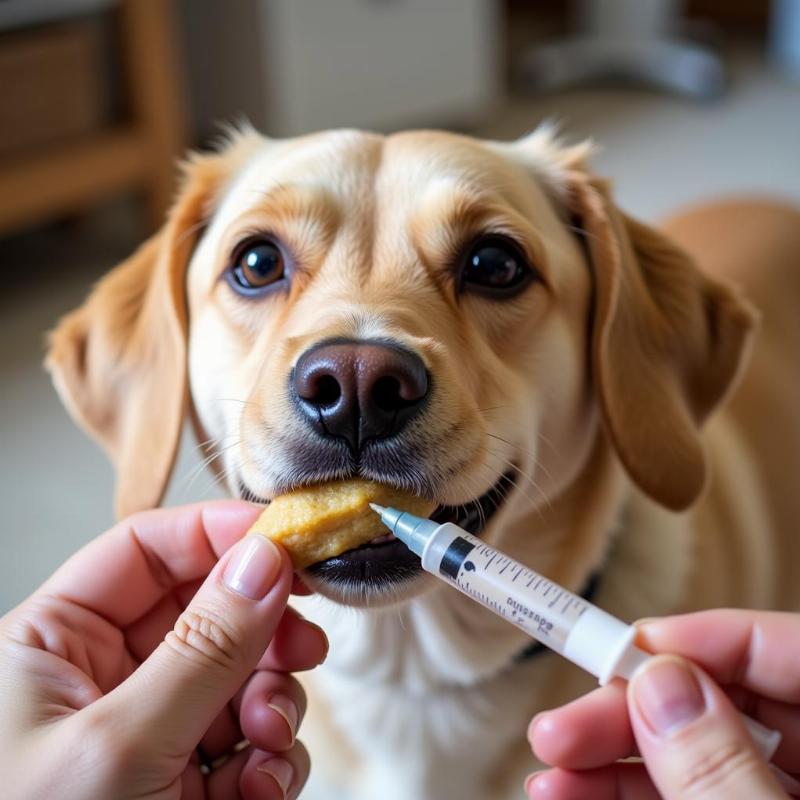After your furry friend undergoes dental surgery, providing them with the right nutrition is crucial for a smooth and comfortable recovery. Soft food for dogs after dental surgery not only makes eating easier but also helps prevent irritation and promotes healing. This article will guide you through everything you need to know about choosing and preparing soft food options for your dog post-surgery, ensuring their nutritional needs are met during this sensitive period.
Understanding Your Dog’s Post-Surgery Needs
Immediately following dental surgery, your dog’s mouth will be tender and sore. Chewing can be painful, making it difficult for them to consume their regular kibble. Soft food options are essential to ensure they receive adequate nutrition without exacerbating discomfort. Additionally, certain dental procedures may require a temporary shift to a softer diet to allow the surgical site to heal properly. Your veterinarian will provide specific dietary recommendations tailored to your dog’s individual needs and the nature of the procedure.
Choosing the Right Soft Food
Several commercially available soft food options are suitable for dogs recovering from dental surgery. Look for wet food formulated specifically for sensitive stomachs or dental care, as these tend to be highly digestible and easy on the gums. Alternatively, you can prepare homemade soft food by blending their regular kibble with water or broth to create a palatable mush. Avoid foods that are hard, crunchy, or require extensive chewing. Stay away from treats like bones, rawhides, and hard biscuits until your veterinarian gives the all-clear.
Commercial Soft Food Options
- Canned Wet Food: Look for pate-style wet food, as it is the softest and easiest to consume.
- Prescription Diets: Your veterinarian may recommend a prescription diet specifically formulated for post-surgical recovery.
- Dental-Specific Diets: Some brands offer kibble that softens easily with water, providing a convenient option.
Homemade Soft Food Options
- Blended Kibble: Combine your dog’s regular kibble with warm water or low-sodium broth until it forms a smooth consistency.
- Cooked Chicken and Rice: A bland diet of boiled chicken and rice can be gentle on the stomach and easy to digest. Ensure all bones are removed.
- Pureed Vegetables: Adding pureed vegetables like sweet potatoes or carrots can boost the nutritional value of homemade soft food.
Feeding Techniques and Tips
How you feed your dog after dental surgery is just as important as what you feed them. Offer small, frequent meals throughout the day to avoid overwhelming their sensitive mouth. Ensure the food is lukewarm or at room temperature, as extreme temperatures can cause further irritation. You can also try hand-feeding your dog initially to encourage them to eat.
Syringe Feeding
If your dog is reluctant to eat, syringe feeding can be a helpful technique. Blend their food into a liquid consistency and gently administer it using a syringe without a needle. Be patient and avoid forcing the food, as this can cause stress and discomfort. Consult with your veterinarian for guidance on proper syringe feeding techniques.
 Dog being syringe-fed
Dog being syringe-fed
Transitioning Back to Regular Food
Once your dog’s mouth has healed sufficiently, you can gradually transition them back to their regular diet. Start by mixing small amounts of their regular kibble with the soft food, gradually increasing the proportion of kibble over several days. Monitor your dog for any signs of discomfort or difficulty chewing. If they exhibit any issues, revert to the soft food and consult your veterinarian.
Conclusion
Providing soft food for dogs after dental surgery is a crucial aspect of their recovery. By choosing appropriate soft food options and employing proper feeding techniques, you can ensure your furry friend receives adequate nutrition while minimizing discomfort and promoting healing. Remember to consult with your veterinarian for personalized dietary recommendations and follow their guidance closely throughout the recovery process. A healthy diet plays a vital role in ensuring a smooth and comfortable recovery for your beloved companion.
FAQs
- How long should I feed my dog soft food after dental surgery? Your veterinarian will advise on the specific duration, but it typically ranges from a few days to several weeks.
- Can I give my dog treats after dental surgery? Avoid hard treats until your veterinarian approves. Soft treats specifically designed for dental health might be an option.
- What if my dog refuses to eat soft food? Try different flavors or textures, hand-feeding, or syringe feeding. Consult your veterinarian if the issue persists.
- Is it normal for my dog to have bad breath after dental surgery? Some bad breath is common initially, but persistent or worsening bad breath should be addressed by your veterinarian.
- When can I resume giving my dog chew toys? Wait until your veterinarian confirms that your dog’s mouth has healed completely.
- Can I add supplements to my dog’s soft food after dental surgery? Consult your veterinarian before adding any supplements to your dog’s diet.
- What are the signs of infection after dental surgery? Increased swelling, redness, bleeding, or discharge should be reported to your veterinarian immediately.
Related Articles
best soft food for dogs after dental surgery
how to feed dog using syringe
can dog have cooked pork bone
50 pound bag dog food
Beautdogs.us is your premier destination for all things dog-related in the United States. We offer expert advice on dog breeds, care, and nutrition, along with a curated selection of products to enhance your dog’s life. Whether you’re a new dog owner or a seasoned expert, Beautdogs.us is your trusted source for comprehensive and engaging information. Contact us today at [email protected] or +1 501-555-7529 to learn more.